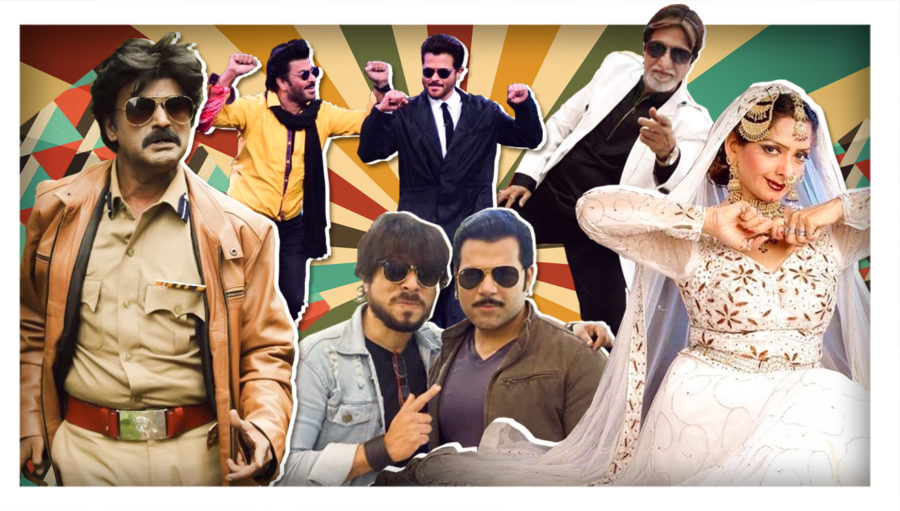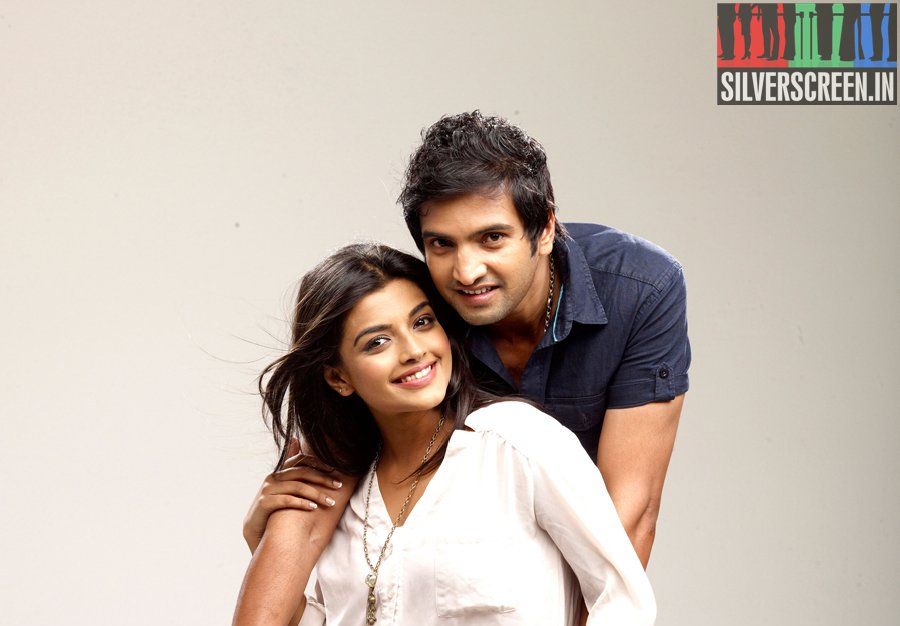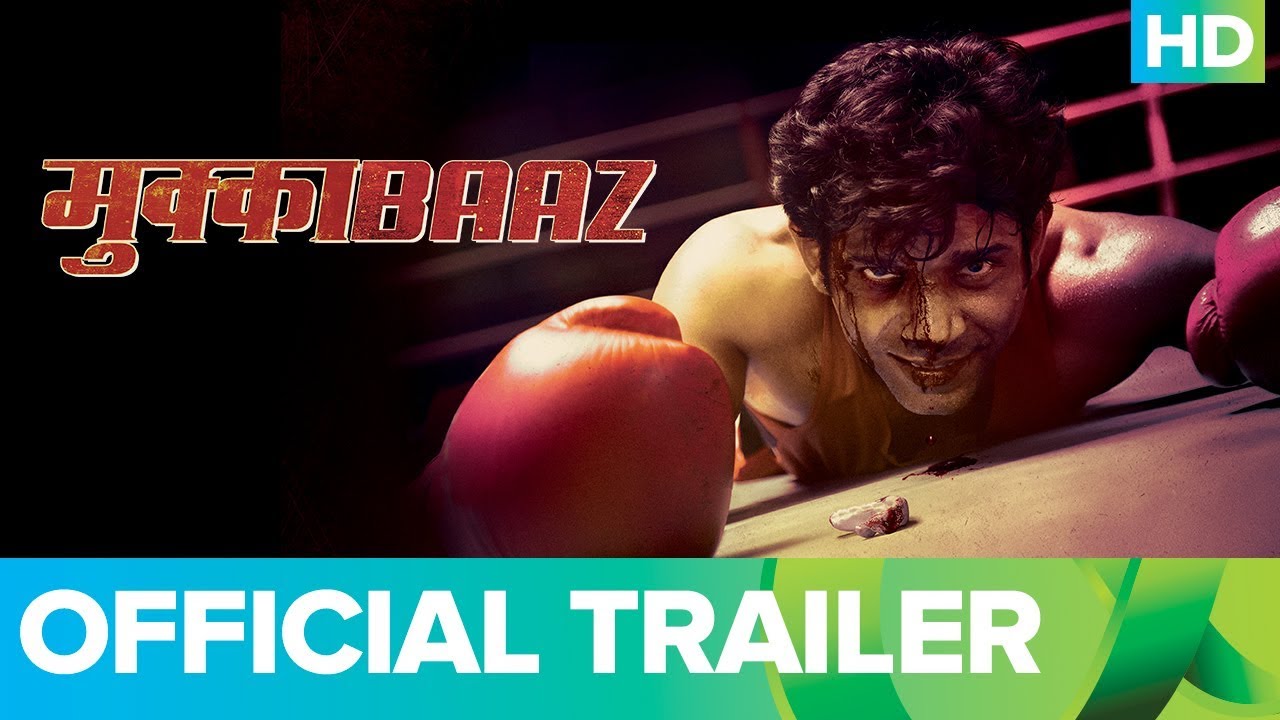“When I was in my teenage years, people would tell me that I looked like Rajinikanth, but I did not pay heed to it. I was just a fan of Thalaivar. He is my guru. I became fond of him ever since I saw his Tamil film Aarilirunthu Arubathu Varai,” says Kannan Pillai who resembles veteran actor Rajinikanth and is a professional lookalike.
The 48-year-old Pillai is among many lookalikes who thrive in the Indian film industry, disguising themselves as famous actors to earn a livelihood. From working as body doubles of actors to acting in small-budget films as their famous counterparts, Silverscreen India delves into the industry of body doubles and understands what it means to the faces that are masked as famous actors.
Pillai, who now is settled in Pazhani, Tamil Nadu, and owns two stores, has taken up being a lookalike as a part-time job. He will be seen in the upcoming Telugu film RGV Missing as a lookalike donning Rajinikanth’s getup from his 2020 film Darbar.
Pillai says that he had performed at cultural events in Japan, which is known to have a considerable fanbase for Rajinikanth, since the actor seldom attends such events. He was recently offered a part in an undergarment commercial which he turned down.
“I will never act in a way that will insult Rajinikanth,” he says.
A source of livelihood
For 65-year-old Rajkumar Bakhtiani, being a lookalike of actor Amitabh Bachchan is helping him to earn a livelihood at his old age. Having 40 years of experience as a lookalike, Bakhtiani performs at award shows, corporate events, other stage shows and has worked in four to five small-budget films as Bachchan. He featured in the song Munni Badnaam Hui in the Salman Khan-starrer Dabangg.
Known as Junior Bachchan, Bakhtiani says he struggled in the 80s to become an actor.
“I went to a photographer, made albums of my photoshoots, attended casting calls to become a real actor,” he says. Bakhtiani says that it was not easy to get acting jobs unless they had formal training in it.
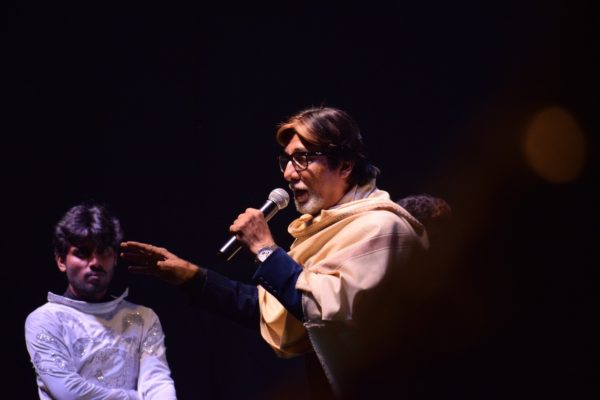
“I was a big fan of Shammi Kapoor. I, along with my friends, in the 70s, would do stage shows and street plays. I used to dance to his songs. Later, Shammi Kapoor had stopped acting and Bachchan had come into cinema. I was in college at that time and resembled Bachchan. There was a movie called Do Anjaane where Bachchan sported a beard. When I grew my beard too and took a photo, I resembled him,” says Bakhtiani.
Bakhtiani soon started performing in local stage shows and festivals. “The first performance I gave as Bachchan was for a song from Namak Halaal for a local show. After doing a few shows, I began to be known as junior Amitabh,” he says.
Bakhtiani owes his good fortune for being able to stay noticed among the ocean of lookalikes of Bachchan. “Since I am famous, I am the first preference when it comes to looking like Bachchan. But this field is very competitive.”
He gets paid about Rs 30,000 for a show and says corporate events pay more. While TV channel shows earn him around Rs 15,000 to Rs 20,000, commercials pay him Rs 35,000.
Hindi film industry’s affinity to lookalikes
According to Pillai, most of the lookalikes are based out of Mumbai as the industry there is thriving.
“In Tamil Nadu, there is no respect or value for duplicates. But in the north, they respect and pay more. They have made this an industry by itself and for many, it is their profession,” he says.
“At present, there are many lookalikes of many actors and they are quite perfect. So, they get work if the main stars are busy elsewhere. We also do body doubles of our film stars also. Like in commercials or in films. I have done his body doubles for Bachchan in commercials,” says Bakhtiani.
Pillai has been a lookalike for 30 years, including the 15 years he spent in Mumbai. Pillai says that his trip to Mumbai gave him a fresh lease of life.
“I used to see every film of Thalaivar’s that was released until I completed SSLC. Then, I moved to Chennai to work at my uncle’s shop. At the time, I didn’t know how to act nor did I have an interest in learning it. That changed in 1991 when my friend took me out on a sightseeing tour of Bombay. When we visited the Gateway of India, many people there called me a ‘duplicate of Rajinikanth’. They said even my walking style and hair bore similarities to him. A few photographers clicked my photos there,” reminisces Pillai.
Pillai says that lookalikes of Hindi actors were famous at the time. Incidentally, the Hindi film Ramgarh Ke Sholay, which featured lookalikes of Amitabh Bachchan, Dev Anand, Govinda, and Anil Kapoor, released around that time. After seeing opportunities for lookalikes, Pillai shifted his base to Mumbai after which a casting director and events manager spotted him.
“I said frankly that I did not know how to act but they said they would teach me. They arranged for a photoshoot, and helped me practice and learn all of Rajinikanth’s mannerisms and quirks. After a month, I started to get opportunities to perform as Rajini’s lookalike in corporate events, international cultural shows, and other personal events.”
However, for lookalikes down south, the picture is not as rosy. While some of the lookalikes’ gigs come from election campaigning and political roadshows, for MGR Anil Das, a lookalike of late veteran actor and politician MG Ramachandran, says that work is not as prosperous. Despite Tamil Nadu gearing up for its Legislative Assembly polls on April 6, Das rues no one ropes in lookalikes.
“During Amma’s [late Tamil Nadu chief minister J Jayalalithaa] reign, it was good, but after her death, it has become dull. When she was alive, party members would hire us to act, but now it has gone down,” he says.
What does it take to be a lookalike?
For Pillai, he says that practice is the key to become a lookalike. “Impersonating is more like a magnet that attracts you,” he says.
Being a first-generation actor in his family, Pillai says that since he resembles Rajinikanth, he tried to mimic the actor by watching video cassettes of Rajinikanth’s films.
“I am proud to say that I make lookalikes,” says 62-year-old Sudhir Sinha, who runs Kalakar Orchestra, a Mumbai-based group of lookalikes that performs in cultural events. A former lookalike of Kamal Haasan., Sinha has been running the group for over three decades.
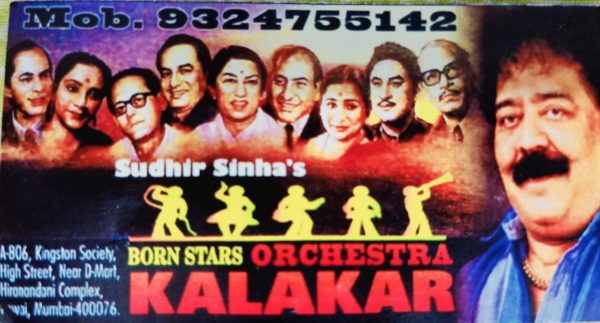
Just like a joker or magician is roped in for entertainment in parties, a lookalike is similarly hired in social gatherings as a form of attraction, Sinha says.
Around 50-60 years back, mimicking one’s voice was popular and attention-grabbing, Sinha says. It comes it with an added advantage when their looks resemble the actor. Talking about how he began to train people, Sinha says: “When I was 15, a regional film was being screened on the television and my mother spotted that the actor looked like me. Somebody told me that I resemble the South Indian actor, Kamal Haasan. Then I started to imitate voices and act. People appreciated it. Later, I started to look like actors, including Ajith Kumar, and Shatrughan Sinha. And then, I started to train other lookalikes.”
Sinha has trained 25 lookalikes, including Kannan Pillai.
“After hearing about my training through word of mouth, the lookalikes contact me and I guide them,” Sinha says.
According to Sinha, five out of 10 fans try to imitate their favourite actor and their style. But to become a lookalike, one should be a “born star”, says Sinha. He says that one should possess “desperation and hunger for performance”.
However, Sinha says that an educated person will not explore this profession because he may find it difficult to impersonate someone else.
“I am a mimicry artist with the ability to do around 25 voices. I try to train people in the way they look and resemble actors. I tell them to walking style, watch films, and it is simply an observation. People should tell they look like them,” he says.
Hope for small-budget film makers
One of the main opportunities for lookalikes is through small-budget films made by regional filmmakers. The lookalikes say that while the real actors would charge an exorbitant amount to feature in a film, small-budget filmmakers approach these lookalikes. These films usually open to a handful of screens, mostly in the rural belts.
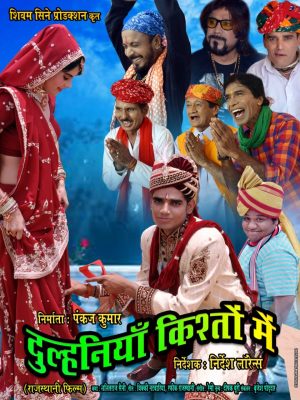
“I was 100% satisfied with the lookalikes and many people liked the film,” says filmmaker Nirdesh Lawrence, who made a Marwari film called Dulhaniya Kishton Mein featuring lookalikes of Nana Patekar (played by Tirthanand Rao) and Shakti Kapoor. The film completed shooting in April 2019 and was released in two-three theatres in the villages of Fatehpur, Rajasthan in November that year.
“I had cast lookalikes because when we do small budget films, we cannot get in touch with big artists and these lookalikes are very similar to them. So, when we don’t get them, why not use their lookalikes who resemble them a lot?” he says.
Asked why he opted for lookalikes over new actors, who would have charged far lesser, he explains: “Because lookalikes perform better and the artists are already trained in acting. New artists have to be trained. People will also look at the film for star value and can get more viewers. More fans of the real actors also watch these films. To tap those segments of viewers, I roped in lookalikes.”
While working with new actors may require extra publicity for the film, a minimum guaranteed viewership and money is achieved through lookalikes, Lawrence says.
However, it is more than financial aspects, says filmmaker Ramesh, who is a chief associate director in Telugu film RGV Missing, starring Pillai as Rajinikanth. While the script of RGV Missing “demanded” a lookalike to be cast, the boom in new content on digital platforms contributes to casting lookalikes, says Ramesh. With the rise of OTT platforms, producers give priority to entertainment value since it plays a key role in “selecting the content”.
“If I am a certain actor’s fan, I wish to watch their films every week but it is impossible to see because stars act only a few films in a year. But fans get chance to watch a greater number of films of a particular actor in that year in case of films made with lookalikes,” Ramesh says.
He also says that to “grab the attention” of audiences, regional films are more likely to engage lookalikes in their films. With entertainment being accessible in cell phones nowadays, Ramesh says that filmmakers want to produce more “footage” and are on a constant lookout on what will pull crowds.
“For example, I like Chiranjeevi, when I find something similar to him, my attention automatically goes, so it is easy to grab audience attention. There is more user traffic for films with lookalikes in regional films,” he says.
Covid-19 pandemic, a trying time
The Covid-19 pandemic and its subsequent lockdown, which impacted the film industry, has similarly landed a blow on the lookalike industry. Lookalikes, who had national and international shows booked in 2020, were cancelled.
“I had six confirmed shows to attend in 2020, all of them were cancelled,” says Bakhtiani.
Tirthanand Rao, a 45-year-old lookalike of actor Nana Patekar, says that the pandemic has brought distress with four of his gigs, including a tour in Australia standing cancelled in 2020.
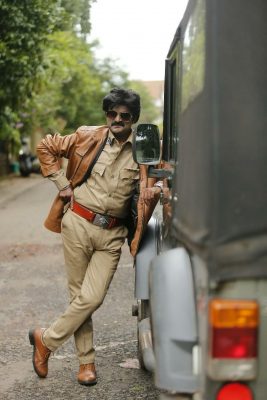
Arif Khan, who is a lookalike of Anil Kapoor and the president of All India Lookalike Association (AILAA), says that lockdown rendered the members of the association jobless. “Most of the lookalikes remained at their homes. We had a problem with ration because there were no shows or films happening. We were in need of basic needs,” says Khan. AILAA has around 316 members to it.
In April 2020, popular Hindi actor Salman Khan came forward to help the lookalikes by giving them Rs 3,000 cash and food coupons worth Rs 1,500 through his Being Human Foundation.
“I started to try through our association to help the lookalikes and called BN Tiwari, president of Federation of Western India Cine Employees (FWICE) to help us. He conveyed it to Salman Khan and he gave everyone Rs 4,500 in two installments, including a food voucher ration during the entire lockdown period,” Khan says.
AILAA is one of the 28 associations that come under FWICE.
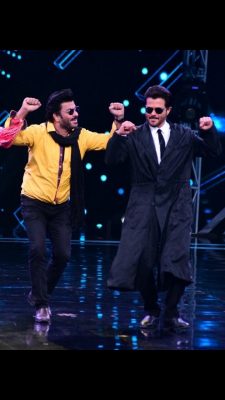
Other challenges
The pandemic and the subsequent lockdown, however, are not the only challenges for these artists.
Being a lookalike also comes with the expense to maintain the actor’s look.
The fierce competition among lookalikes of the same actor also brings in jealousy, says Rao.
“In the lookalike industry, since artists do not really achieve anything very big, there is a lot of jealousy between the lookalikes of the same actor. People try to steal jobs by offering low prices. It is very competitive. There are many duplicates,” he says.
Khan feels that lookalikes do not get enough recognition from the industry. As a step towards recognising their talents, Khan organised the Indian Lookalike Film Awards (ILFA) to honour the talents in 2018.
“No one has awarded us or nominated us for awards. I organised to highlight the works of lookalikes. The film industry still looks at us as small. But I wanted to tell them that when they call us a duplicate, they are too. Our Hindi film industry is called Bollywood. Where does it come from? From Hollywood. They have just replaced the first letter,” Khan says.
“I want our films to be screened on single screens and reach the theatres. A lot of people look down on our films saying we are duplicates,” Khan says, adding that the ILFA will be held this year too.
Male-dominated industry
Mirroring the Indian film industry, the lookalike industry is dominated by men with only a few women in the profession. Sinha says that out of 100 lookalikes, there are 10 women lookalikes.
“Men have a lot of physical traits that can be modified, but women do not seem it dignified to be a lookalike. They want to be original,” he says.
Priyanka Shetty, a lavani dancer, works as a part-time lookalike of Sridevi and Rekha. Shetty is a member of AILAA and stumbled into the profession of lookalike after people pointed similarities between her and the veteran actors.
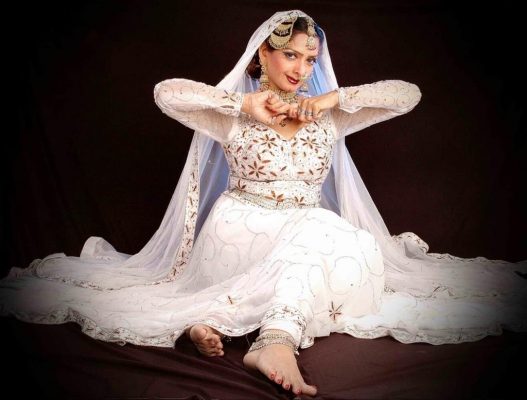
Trained by Sinha, Shetty performs lavani, a Maharashtrian dance form, with her group of 35 dancers and has been a performer for 15 years. While stating that the lookalike industry is male-driven, Shetty says she feels comfortable and respected in the industry. Speaking about the recognition one gets as a lookalike, she says, “Yes, I do feel the lack of recognition for lookalikes in the film industry but I see it this way. When I am a lookalike, I need to think how she [Rekha] would act and carry herself. But some people say that we don’t look alike. It is not an easy career.”
She says that there is a lot of hard work that goes in makeup and dressing up
Lookalikes, a tool in election campaigns
Political parties are one of the main clients of lookalikes as many state and national-level parties rope in lookalikes during roadshows and campaigns for their popularity and ability to be a crowd-puller. Lookalikes are called for campaigning in Assembly, parliamentary, and even local body elections.
“I have participated in election rallies in Kanpur, Nagpur, Bengaluru, and Gujrat. We don’t go to stages but we do roadshows. It is done to gather fans and attain publicity. We say a few punch dialogues and wave at people. I have been roped in by the BJP, and Congress too,” says Pillai. He says that political parties offer Rs 10,000 to Rs 20,000 per day for about three hours of job per day.
Rao feels that lookalikes are hired because they are entertainers and make people enthusiastic about the political parties they are rallying for.
“We have been called during elections because people think the actor has come and we say that we have come for the party and campaign for the candidates. I get around Rs 5,000 to Rs 10,000 for eight hours of campaigning,” he says.
Khan, who has attended rallies for the BJP, Shiv Sena, Congress, says that he introduces the candidates to the crowd and calls him “his good friend”. “We get money from parties but do not say that, and we say he is our friend and he will work for you and please vote for him.”
In search of the real actor
Most of the lookalikes say they aspire to become an actor themselves, not just be someone’s shadow. Many struggling actors end up as lookalikes when they fail to make it big.
The thought of failing to become an actor will always linger, says Rao.
“Yes, I have felt very bad at times because in real, I am a good actor. Because I’m a lookalike, people don’t give me other works. I wanted to make a name for myself but I ended up making a name out of Nana [Patekar],” he laments.
However, Rao says that he is happy as his livelihood comes from being a duplicate of Patekar. He says that Patekar respects him as a lookalike and recommends him for gigs that he cannot attend. Rao has worked as Patekar’s body double for a plywood commercial, and as one of the double roles in the 2015 Hindi action-comedy film Welcome Back.
Rao, who has been in the industry for 17 years and has done over 50 small-budget film says that becoming a lookalike was by chance.
“When I was in college Mumbai, I used to stage shows and cultural. At that time, I grew a beard, and people used to tell me that I looked like Nana. At that time, I did not pay much heed to it but I had aspirations to become an actor. I used to do small junior artist’s roles in serials and once, I went to an audition where lookalikes of Nana Patekar came. Around 10-15 lookalikes were there. At that time, I was not even a lookalike,” recalls Rao.
Rao was later chosen for the 2003 Marathi film Lai Bhannat. He says that was how people in Maharashtra got to know about him. He has featured in several shows, including the hit television comedy chat show The Kapil Sharma Show. He has acted in over 300 television serials as a lookalike in more than eight languages.
Rao believes that he will become a real actor someday. He is currently starring as himself in an upcoming Hindi film, Pav Bhaji, in an antagonist role. He has also done a small role in the 2013 Hindi film, Mai, starring veteran singer Asha Bhonsle in her acting debut.
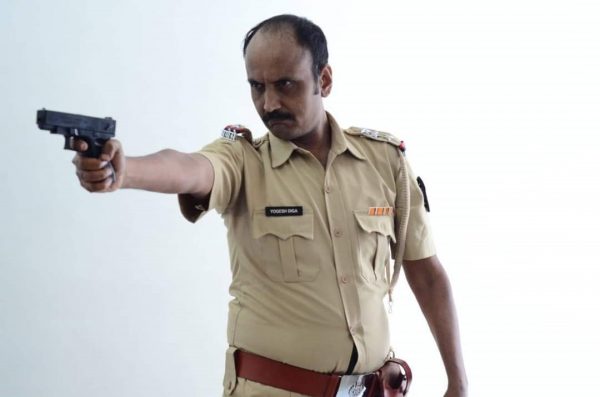
Khan says that he prefers to be cast as an actor than as a lookalike of Anil Kapoor.
“I act like Anil Kapoor because of my occupation, but if someone hires me because of my acting, I think I would like that the best. But I do lookalike acting because I need the money,” he says.
Bakhtiani, too, continued his struggle to be an actor despite being a lookalike.
“I was not trained, but acting was quite simple for me. However, I did not get acting jobs. I was married and had two children. I had to support them. I then went for a marketing job,” he says.
Though he did not land up in real acting roles, offers had come for him to act like Bachchan’s lookalike.
“This was also the time when Bachchan was hosting Kaun Banega Crorepati in the 2000s. I got good shows and I was up and coming at the time. Since I could not do two jobs, I left my marketing job and became full-time lookalike,” he says.
Recommended
Das says that he had dreamt of becoming an actor when he went to Chennai from Salem 30 years ago to learn dance and try his hand at the film industry there. After getting “tired of looking for chances”, Das resorted to becoming a lookalike to earn money and fame.
“I have gone to shows in Malaysia, Sri Lanka, Dubai, and Switzerland, but a part of me is still sad that I could not act as myself,” says Das. He says the initial days of being a lookalike was tough as he would be fooled and denied payment after shows.
Asked if he still dreams of being an actor, Bakhtiani says: “I am happy with what I am now. Bachchan is my godfather and I am satisfied that he is there and I pray he gets more work.”
At the end of the day, Sinha says that being a lookalike earns them something- attention and most importantly, a livelihood.
